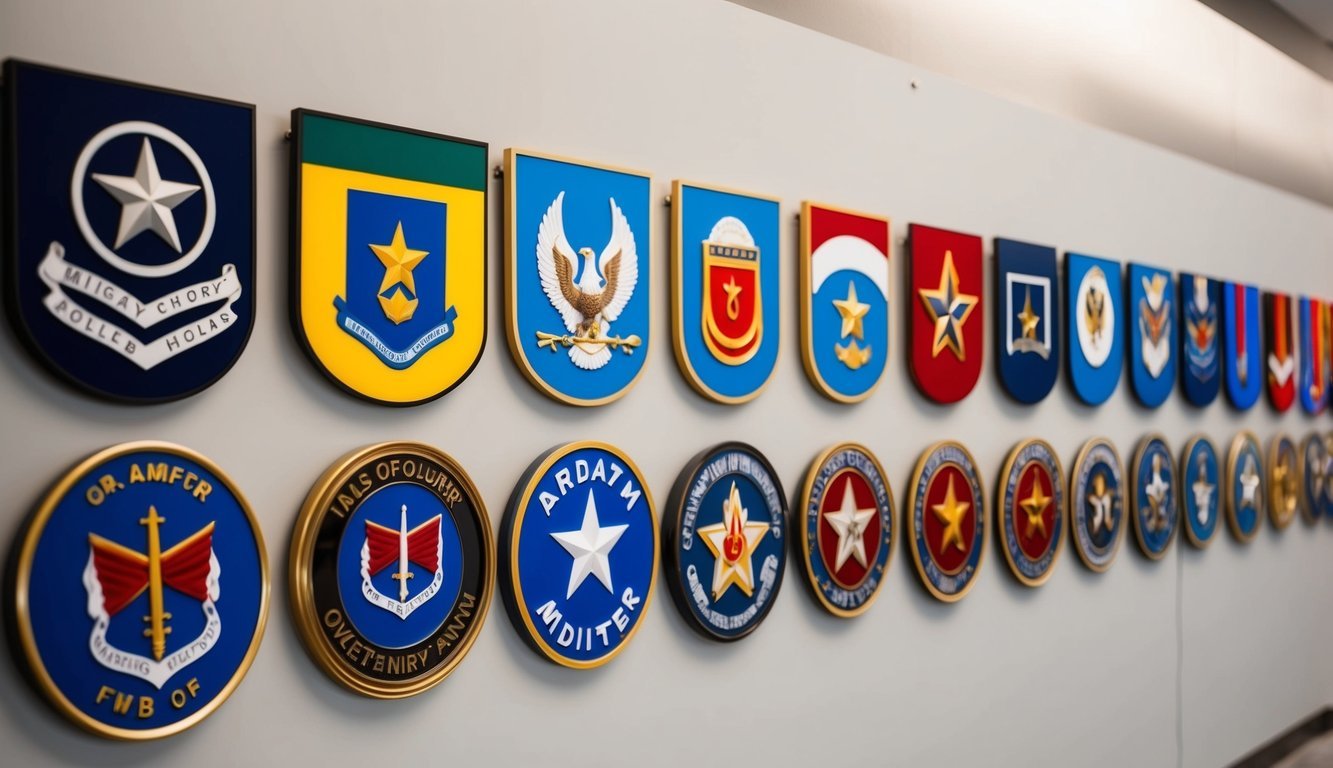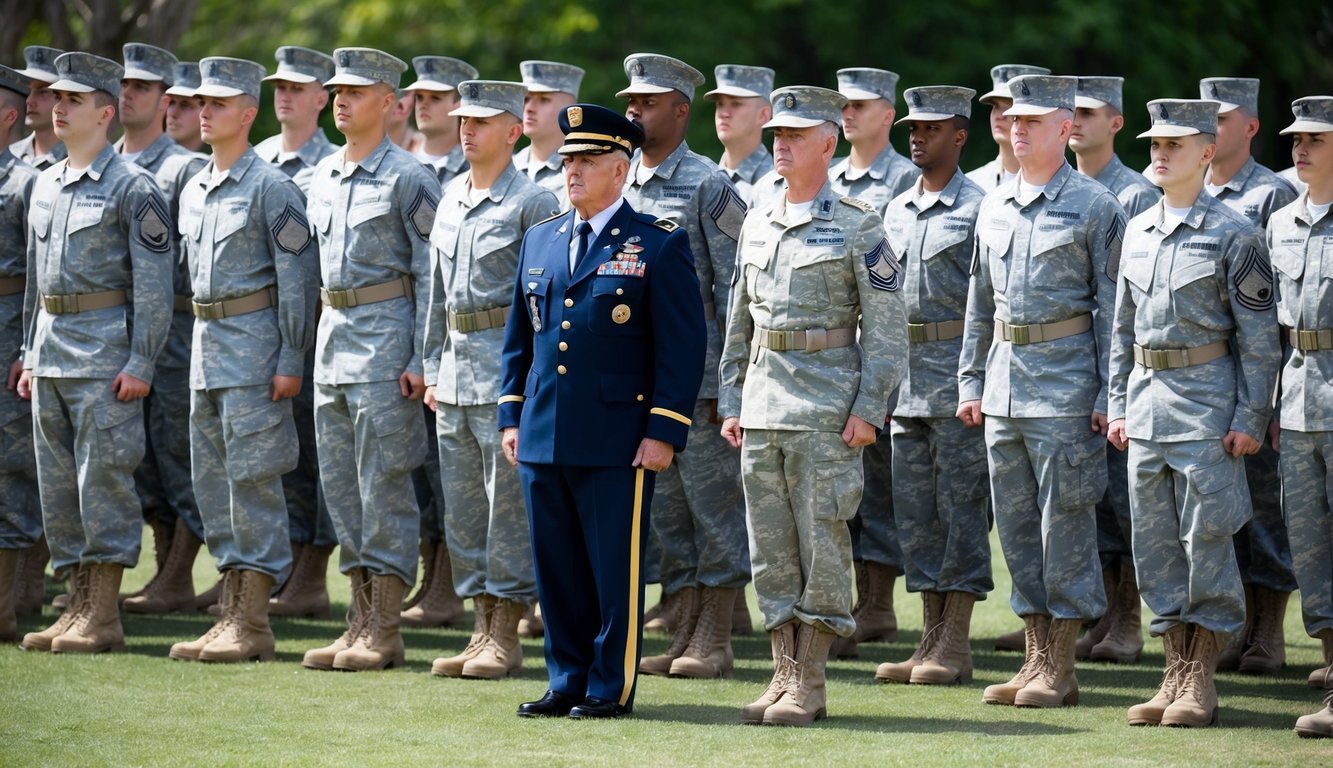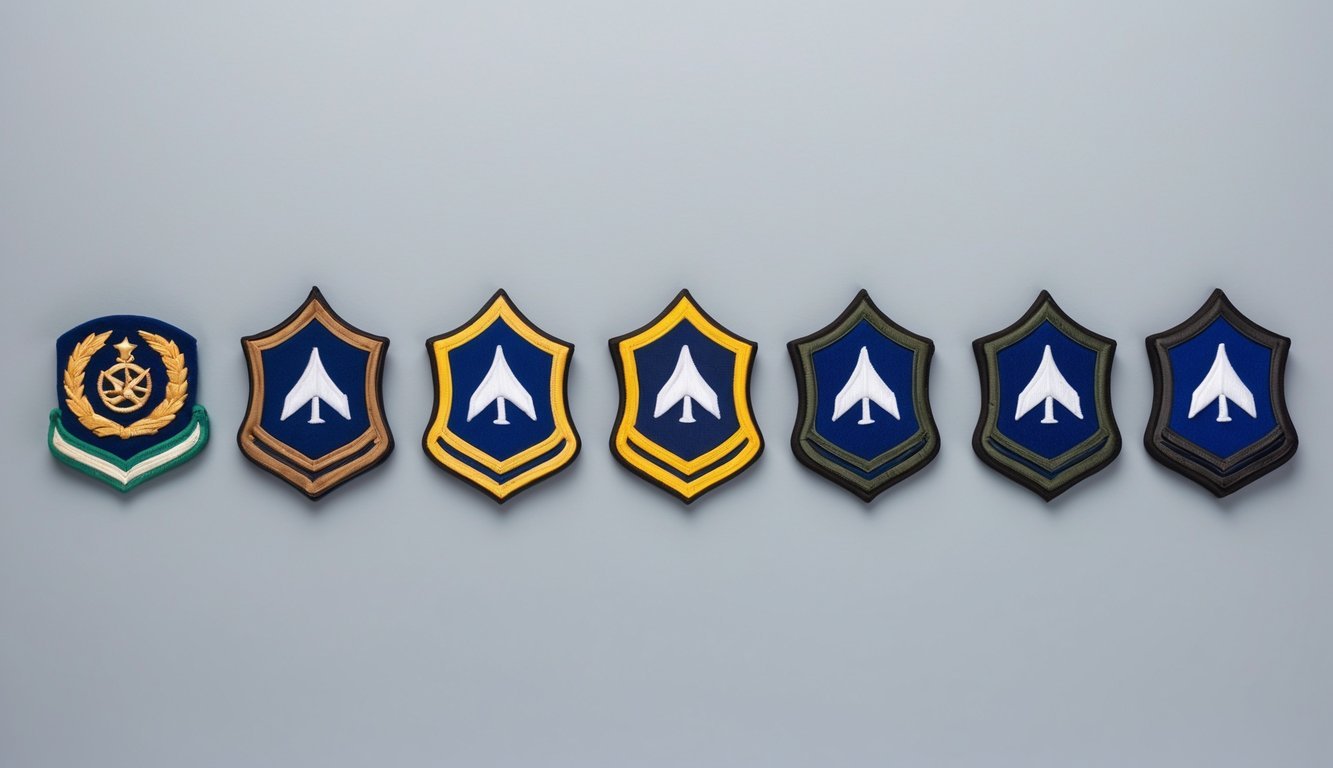PsychNewsDaily Publishers
100 Summit Drive
Burlington, MA, 01803
Telephone: (320) 349-2484
PsychNewsDaily Publishers
100 Summit Drive
Burlington, MA, 01803
Telephone: (320) 349-2484
Army ranks define roles, responsibilities, and pay grades, with enlisted ranks ranging from Private to Sergeant Major, and officer ranks from Second Lieutenant to General.

Army ranks are essential for organization and leadership within the military. They help define roles, responsibilities, and pay grades. It’s interesting how these ranks shape the structure of the Army and influence everything from leadership to daily operations.
So, let’s dive into the basics of army ranks. Each rank is part of a hierarchy, which means some ranks are higher than others and come with more responsibilities. The Army generally splits its ranks into two categories: enlisted and officer ranks.
Enlisted ranks start from Private and go up to Sergeant Major. These folks do a lot of the hard work on the ground. Officers, on the other hand, begin at Second Lieutenant and can rise to General. They usually handle more strategic tasks. There are specific pay grades for each rank, which helps determine salary and benefits. It’s a clear system that guides personnel through their military careers. I find it fascinating how ranks not only dictate pay but also the level of trust and responsibility assigned to each person.
Enlisted ranks are like the backbone of the Army. They form the largest group and perform various essential tasks. This includes everything from combat operations to training new soldiers. Each enlisted rank comes with its set of duties and authority.
Take the Sergeant, for example. They lead small teams and directly manage soldiers on the ground. It’s a huge responsibility! Honestly, I’m amazed at how much they juggle every day. Ranks also play a part in promotions; proving oneself is key to moving up in the ranks. It’s about hard work, commitment, and, of course, demonstrating leadership skills.
When it comes to officer ranks, things get a bit more strategic. Officers oversee operations and decision-making, which can influence outcomes on the battlefield or within the organization.
The journey often starts at Second Lieutenant and can progress all the way to General. Each level has distinct roles. For example, Majors might find themselves managing units, while Lieutenants often get hands-on experience with troops. I wonder if soldiers ever see a Lieutenant and think, “Wow, that could be me one day.” The climb can be steep, but it’s about gaining experience and building leadership qualities along the way. Each rank reflects personal growth as much as it does responsibility.

Insignia and symbols play an important role in the Army, helping to identify rank and unit affiliation. They tell stories about duty and commitment, as well as the journey of a soldier. Let’s take a closer look at how these visible marks shape our understanding of military ranks.
Understanding rank insignia is kinda fascinating. Each rank in the Army has a specific insignia that represents a soldier’s level of authority and experience. For example, a Private (E-1) wears no insignia at all. Then, we have a Private Second Class (PV2, E-2) with one stripe. Moving up the ranks, a Private First Class (PFC, E-3) dons those distinctive two stripes. It’s like a ladder where each step tells a story.
From there, there’s Specialist (SPC, E-4). This rank has a unique insignia that looks different than the others, but still reflects a degree of responsibility. Honestly, when I see someone in uniform, I can’t help but wonder about their experiences. Each insignia isn’t just a symbol; it’s a badge of hard work and dedication.
Uniforms are more than just clothing; they are a canvas of history. Each part of the uniform symbolizes something significant. For instance, the Army Combat Uniform (ACU) has pockets and loops that serve a purpose. It’s practical for field operations, but also makes soldiers stand out as a cohesive unit.
Many uniforms feature patches that show unit affiliations, deployments, or special qualifications. I think it’s interesting how these small details tell stories of camaraderie and service. You can really see the pride when soldiers wear their uniforms decorated with these insignias. It’s as if they wear their hearts on their sleeve—literally!
I wonder how many stories would unfold if we could hear from every soldier about their insignia and uniform. Each piece, from the rank patches to the medals, adds depth to who they are. Isn’t it amazing how something so visual can carry so much meaning?

Career progression in the Army is all about moving up through the ranks based on performance, experience, and time in service. It’s an exciting journey that I find really interesting to explore. There are different paths depending on whether you enlist, go for an officer position, or become a warrant officer. Let’s dive into those specifics together.
When I think about enlisted ranks, I see a path filled with hard work and dedication. Soldiers start as private recruits after basic training. From there, they can move up to ranks like Private First Class and then Corporal or Specialist. Promotion to E-5, or Sergeant, usually happens within two years if they play their cards right.
The key to climbing the ladder is not just time served. Demonstrating leadership skills and completing additional training are big factors. Soldiers can also earn points for promotion boards, which is basically a big deal in their career growth. It’s interesting how many enlisted soldiers aim for those higher ranks, pushing themselves to learn and excel.
For officers, the journey is a bit different and often ties back to education. Most officers start out as Second Lieutenants, and their path involves not just time in service but also demonstrating leadership qualities and tactical expertise. To advance, they might achieve ranks like Captain or Major, which often takes years of dedicated service and assignments.
Honestly, I wonder how it feels to be responsible for leading troops. Officers often have to balance their technical skills with people management. It’s not just about getting promoted; it’s about being ready for increased responsibilities. Mentorship and networking, along with a strong performance record, play major roles in their career progression.
Warrant officers are different from regular officers and enlisted soldiers. They specialize in technical fields and often become experts in subjects like aviation or logistics. Starting as a Warrant Officer 1, they can rise as high as Chief Warrant Officer 5. The thing that’s cool about this path is that it’s so focused—these folks have a specific area of expertise and are highly valued for that.
To become a warrant officer, you typically need to have some experience first. It’s a blend of technical know-how and leadership ability. Many go through rigorous training to prove their skills in their chosen field. This unique position allows for both leadership and specialization, which can be quite rewarding for those who love what they do.

The army’s organization is quite fascinating. It consists of various units, sizes, and functions that work together to perform missions. From small squads to large divisions, each group has a specific role in maintaining military efficiency.
Starting small, let’s talk about squads. A squad usually has around 9 to 13 soldiers. They’re like a tight-knit team.
Next up, we’ve got platoons, which contain several squads, usually about 30 to 40 troops. It’s pretty neat how these units all fit together.
Then we get to battalions, which can include several platoons. They’re larger, containing anywhere from 300 to 1,000 soldiers. It’s easy to see how this scales up.
Brigades are next and can pack in around 3,000 to 5,000 personnel. That’s a whole lot more! Finally, divisions, which are composed of multiple brigades, can have anywhere from 10,000 to 20,000 troops. I often wonder how all these different levels coordinate so smoothly in the chaos of military operations.
Now, let’s think about specialized units. They play a vital part in the army, each with its unique mission.
Infantry units, for example, are the backbone of ground forces. They take the fight to the enemy.
Then there’s armor, which uses tanks and armored vehicles. They’re built to provide heavy firepower.
Cavalry units are generally quicker and provide reconnaissance, always scouting ahead.
Field artillery is another key player, using long-range weapons to support troops on the ground. Each of these specialized roles mixes and mingles with the others to create a full picture of military capability. We rely on this structure to ensure that everything works together like a well-oiled machine.

There are lots of questions folks have about army ranks. From the structure of ranks to pay scales and even the specific names used in different countries, it’s all pretty interesting stuff.
Starting at the bottom, you’ve got Private, then Private First Class, and next is Specialist. After that, we bump up to Corporal and then Sergeant. The ranks keep climbing with Staff Sergeant, Sergeant First Class, and then the big one, Master Sergeant.
On the officer side, you start with Second Lieutenant, move up to First Lieutenant, then Captain, and so on. It’s quite the ladder!
Good question! Pay in the army is tied to ranks, like a direct connection. Higher ranks usually mean more money. For example, a Private earns less than a Major. It’s set up so that as you take on more responsibilities, your paycheck reflects that.
Ah, the E7 rank is actually known as Sergeant First Class. It’s a respected position, and you’ll find them with quite a bit of experience. They often take charge of squads and help train the younger soldiers, which is pretty important.
It’s definitely not just you! Officer ranks start from Second Lieutenant and move all the way up to General. There are several levels in between, too. Each rank has its own set of duties and responsibilities. It’s really fascinating how the whole structure works.
In New Zealand, they have some different terms for ranks compared to the US. For example, instead of Sergeant, they may say Staff Sergeant for a higher level. Their ranking system is pretty similar overall but does have its own unique flavor.
Oh, absolutely! Those abbreviations can be tricky, can’t they? New recruits often scratch their heads over E-4 or O-3. It takes some time to get used to them. I bet it feels overwhelming at first, but eventually, they catch on.